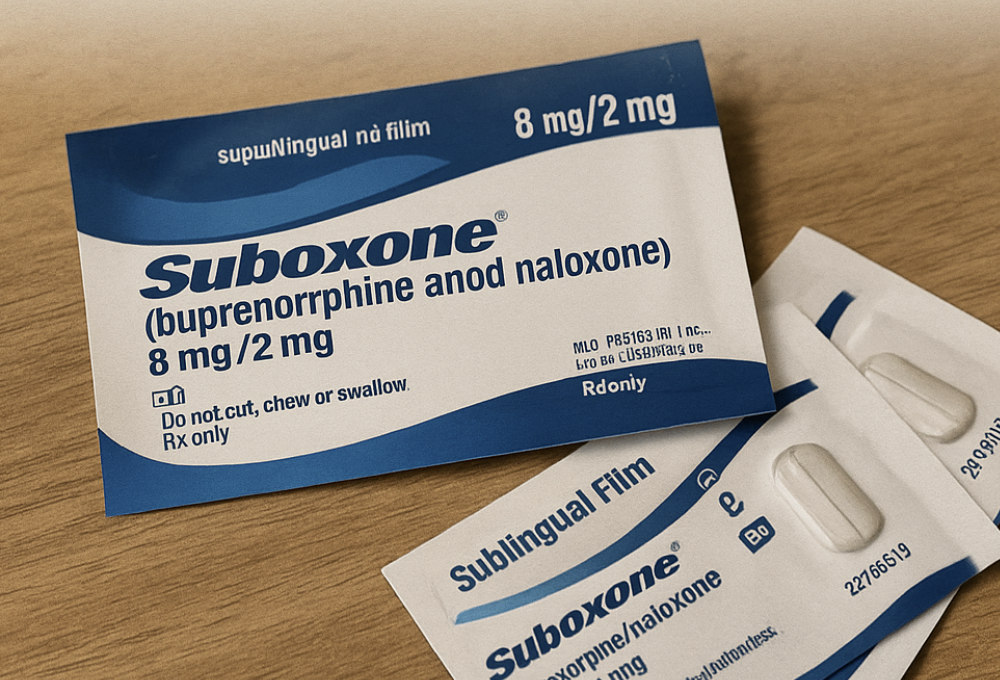Wondering how to stop nausea from Suboxone? This guide provides quick relief tips and long-term solutions. Learn what causes nausea, immediate strategies to manage it, and when to seek medical help, all designed to help you feel better fast.
Key Takeaways
- Nausea from Suboxone can result from the drug’s pharmacological effects, including a combination of buprenorphine and naloxone affecting the central nervous and digestive systems.
- Immediate relief strategies for nausea include taking Suboxone with food, staying upright post-dosing, and using remedies like ginger or peppermint, while consulting a healthcare provider for safe options.
- Adjusting Suboxone dosage under medical guidance, such as splitting doses or gradual titration, can help minimize nausea, and persistent symptoms warrant professional consultation to prevent further complications.
What causes nausea from Suboxone?
Understanding the pharmacological effects of Suboxone acts helps explain why suboxone can cause nausea. Suboxone combines buprenorphine, a partial opioid agonist, and naloxone, an opioid antagonist. While buprenorphine binds to opioid receptors in the brain to reduce withdrawal symptoms and cravings, naloxone blocks these receptors to prevent misuse. This combination can affect both the digestive system and the central nervous system, leading to nausea.
Opioid-induced nausea is a well-documented side effect due to the activation of receptors in both the brain and gut. When these receptors are stimulated, they can trigger the vomiting center in the brain, leading to the sensation of nausea. This is a common issue with opioids, and Suboxone is no exception.
However, not everyone experiences nausea to the same degree. Individual factors such as dosage, metabolism, and personal sensitivity play significant roles in how severe nausea can be. For instance, a higher Suboxone dose or a faster metabolism might exacerbate the feeling of nausea compared to lower doses or slower metabolism.
The central nervous system’s interplay with the digestive system is another key factor. When Suboxone activates opioid receptors, the effects suboxone can slow down gastrointestinal motility, leading to constipation and nausea. This interaction can create a feedback loop, making the sensation of nausea more persistent.
Additionally, the naloxone component, designed to prevent opioid abuse, can contribute to nausea. Although naloxone is important for minimizing misuse, it can intensify withdrawal symptoms if buprenorphine naloxone is taken too soon after other opioids, resulting in severe nausea.

How long does Suboxone-related nausea typically last?
The duration of Suboxone-related nausea can vary, but clinical data and patient reports suggest that it typically lasts between 1 to 3 days, tapering off over the course of a week. This initial adjustment period is common as your body adapts to the medication.
However, distinguishing between initial adjustment symptoms and ongoing nausea is important. Initial nausea is often related to your body getting used to Suboxone, while persistent nausea could indicate issues with chronic use or raise questions about how long you should be on Suboxone. If nausea continues beyond the first week, it might be a sign that your Suboxone dosage needs adjustment or that you may benefit from a medically supervised Suboxone detox.
Persistent nausea can sometimes be a signal that the dose is too high or that the medication was taken too quickly, which may indicate an increased risk of unwanted effects and a serious side effect. Monitoring your symptoms and communicating with your healthcare provider ensures your treatment stays on track.
Many patients have found that with proper adjustments and time, the body acclimates to Suboxone, and nausea, one of the common side effects of Suboxone, diminishes significantly. Sharing experiences and hearing from others who have successfully managed the side effects of suboxone can provide reassurance and practical tips.
Immediate strategies to reduce nausea from Suboxone
When you’re in the throes of nausea, you need quick relief. Several immediate strategies can help, though it’s essential to note which remedies are anecdotal and which are supported by medical evidence.
One of the quickest ways to alleviate nausea is by taking Suboxone with food. This approach can help absorb the medication more gradually, reducing its impact on the stomach. Always consult your healthcare provider before making this adjustment to ensure it’s appropriate for your treatment plan.
Sucking on mints or ginger candy during dosing is another fast-acting remedy. These natural remedies are often recommended for their soothing properties and can help calm the stomach. Staying upright after taking your medication can also prevent nausea by helping the stomach settle and reducing the chance of acid reflux.
Other anecdotal remedies include using essential oils like peppermint or lavender, which can have calming effects. However, it’s crucial to consult your healthcare provider before trying new remedies to ensure they won’t interfere with your treatment.
Summarizing these immediate strategies, it’s clear that while some remedies are backed by medical evidence, others are based on patient experiences. It’s essential to monitor your symptoms and discuss any new approaches with your healthcare provider to find the most effective relief.

Medication options to relieve nausea caused by Suboxone
If immediate strategies aren’t enough, medication options can provide significant relief. Over-the-counter (OTC) options like antihistamines (e.g., diphenhydramine or meclizine) are commonly used to manage nausea. These medications can be effective, especially if nausea is mild to moderate.
For those experiencing more severe nausea, prescription drug antiemetics might be necessary. Options include:
- Ondansetron (Zofran), popular due to its effectiveness and relatively few side effects
- Promethazine, typically prescribed when OTC medications aren’t sufficient
- Metoclopramide, also prescribed when OTC medications aren’t sufficient
Consulting your healthcare provider before taking any medication alongside Suboxone is crucial, and online Suboxone doctors can help guide you through medication adjustments or symptom relief. This ensures that the chosen anti-nausea medication won’t interfere with your treatment or exacerbate other side effects.
Hearing from patients who have successfully used these medications can be encouraging. Many find that once they address the nausea, they can focus more on their recovery journey without the constant discomfort.
How to adjust Suboxone use to minimize nausea
Adjusting how you take Suboxone can significantly impact the severity of nausea. Often, nausea results from the dosage being too high or taken too quickly. Working with your healthcare provider is essential to finding the right balance.
One potential solution is splitting doses throughout the day. This approach can help maintain steadier levels of the medication in your system, reducing the likelihood of nausea. Gradual titration plans, where the dose is slowly increased over time, including higher doses, are also recommended to help your body adjust.
Do not make any dose changes without medical supervision. Your healthcare provider can guide you through the process safely, ensuring that adjustments are done in a way that supports your overall treatment goals. If a doctor prescribes changes, talk with your doctor and follow their guidance closely.
Summarizing, adjusting the dosage and timing of Suboxone treatment can make a significant difference in managing nausea. With professional guidance, you can find a regimen that minimizes side effects while effectively treating opioid dependence.
Diet and lifestyle changes that may help reduce nausea
Dietary adjustments can play a crucial role in managing nausea. Eating small, frequent meals instead of large ones can help keep your stomach settled. Avoiding spicy, greasy, or acidic foods can also prevent irritation that might exacerbate nausea.
Staying hydrated is vital. Drinking plenty of water throughout the day can help flush out toxins and keep your digestive system functioning smoothly. Incorporating ginger or peppermint into your daily routine can provide natural relief, as both have been shown to soothe the stomach.
Practicing deep breathing or relaxation techniques can also make a difference. Stress and anxiety can worsen nausea, so finding ways to stay calm and relaxed can help mitigate symptoms.
Sharing success stories from those who have implemented these changes can provide motivation and practical tips for others. Many find that these adjustments, while simple, can have a profound impact on their overall well-being.
When to see a doctor about Suboxone-related nausea
Recognizing when to seek professional help for nausea is crucial. Persistent nausea lasting more than 5–7 days is a red flag that should not be ignored. This could indicate that your body is not adjusting well to the medication, or that there may be other underlying issues.
Symptoms like:
- vomiting
- dehydration
- weight loss
- An inability to keep food down is are serious side effect and requires immediate medical emergency attention. These medical conditions, including liver disease, can lead to life threatening health problems if not addressed promptly.
Emphasizing the importance of not stopping Suboxone without medical supervision is vital. Sudden discontinuation can lead to severe opioid withdrawal symptoms, exacerbating nausea and other side effects, including sublingual buprenorphine. Doctors may prescribe suboxone to help manage these issues.
Providing a reassuring tone, encourage readers to seek help when necessary and not to suffer in silence. Professional guidance can make a significant difference in managing these symptoms of chronic pain and ensuring a successful treatment program journey with appropriate treatment for mental health. If you feel ready, it’s time to begin treatment.
Bottom Line: Managing Suboxone-Related Nausea
Managing nausea from Suboxone requires a multifaceted approach. Taking Suboxone with food can help alleviate feelings of nausea by ensuring the medication is absorbed more gradually. Dissolving suboxone film slowly in your mouth and avoiding drinking until fully dissolved can also minimize nausea.
Utilizing nausea medications such as Ondansetron might be recommended by healthcare providers if nausea persists despite other adjustments. If nausea or vomiting occurs due to taking Suboxone too soon after opioid use, it may indicate precipitated withdrawals, which require prompt medical intervention.
Adjusting the dosage of Suboxone, either lowering or splitting it into two doses throughout the day, can help reduce nausea symptoms. Maintaining open communication with your provider is important to tailor your treatment plan effectively.
In conclusion, with proper care and adjustments, nausea from Suboxone is usually manageable. Whether through dietary changes, lifestyle adjustments, or medication, there are multiple ways to find relief. Always remember that you’re not alone in this journey, and help is available to ensure your treatment is as comfortable and effective as possible.
FAQs about Suboxone and nausea
Can nausea from Suboxone go away on its own?
Yes, nausea from Suboxone can often resolve on its own as your body adjusts, usually within a few days to a week. If symptoms persist, consult your healthcare provider.
Is nausea a sign that Suboxone isn’t working?
Nausea is a common side effect of Suboxone and does not indicate that the medication isn't working. If nausea persists, a dosage adjustment may be necessary to improve your comfort.
Can you take anti-nausea meds with Suboxone?
You can take anti-nausea medications with Suboxone, but it's essential to consult your healthcare provider beforehand. Medications like antihistamines and Ondansetron are generally considered effective options.
What’s the best time of day to take Suboxone to avoid nausea?
To minimize nausea from Suboxone, many find that taking it in the morning with breakfast is effective, while others prefer the evening. It's important to consult your healthcare provider for personalized advice.
How can I adjust my Suboxone dosage to minimize nausea?
To minimize nausea from Suboxone, consider splitting your doses or following a gradual titration plan, but always consult your healthcare provider before making any adjustments.
















